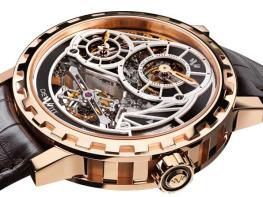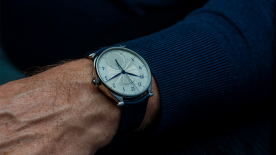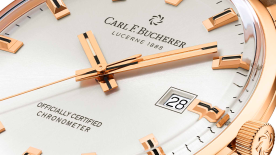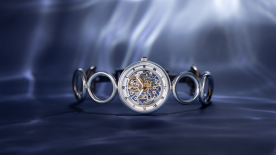As with all DeWitt models, the dial of the new Academia Grand Tourbillon is a masterpiece. It manages to free up space to show off the brand’s in-house tourbillon at the bottom half of the dial, offers clearly legible hour, minute and date indications while at the same time revealing the star wheels that power the jumping hour and minute complication on the movement beneath. These two star wheels, one on the central axis of the hour dial at 9 o’clock, the other offset from the centre of the larger minute dial at 12 o’clock, have large triangular teeth that make their respective hands move in instantaneous jumps.
Jumping-hour watches are, of course, nothing new, but DeWitt’s particular arrangement is unusual for several reasons. Firstly, the indications are arranged in a regulator-style arrangement. This harks back to the time when large regulator clocks were used to provide a reference time in watchmaking workshops – the hour and second hands were on separate axes but in line with each other, so watchmakers could easily see when the two hands were aligned vertically in order to set the correct time of the watches they were assembling. Highly-precise quartz, and even atomic, reference clocks have since replaced the regulators, making them superfluous.
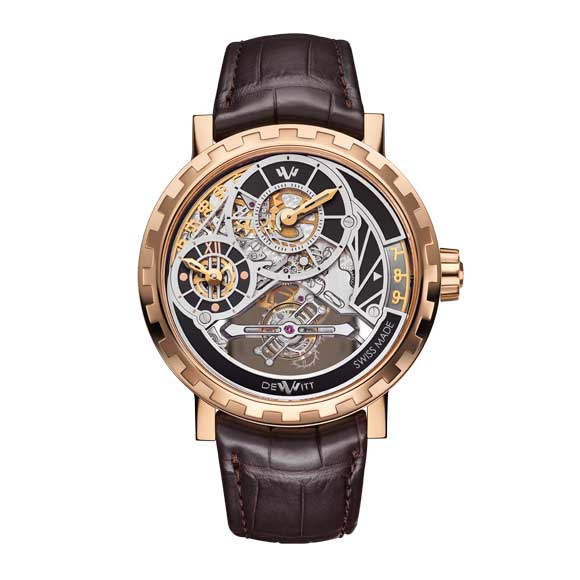
This brings us to the second reason why the new DeWitt Academia Grand Tourbillon is unusual. Whether you use a high-precision atomic clock or an old-fashioned regulator to set your watch, it makes no difference in this case, since the seconds are beaten out at the whim of the tourbillon that dominates most of the lower half of the dial. There is no seconds counter and therefore no reference to set the seconds of the watch by anyway!
Thirdly, the double-edged sword-shaped hour and minute hands both move in instantaneous jumps. The clever arrangement of the dial opens up precisely the area in the movement that powers these functions, allowing the wearer to watch as the slip-spring is progressively armed, before releasing its energy at the top of every minute to move the minute hand.

As if it was not already clear, DeWitt likes to reinterpret the traditional codes of watchmaking in its own particular way. Another great example is the brand’s tourbillon
escapement itself: it has a Straumann® balance spring, with a Phillips terminal curve, that is rated at 2.5Hz or 18,000 vibrations per hour and has an angle of lift of 44 degrees. Regardless of your opinions on the relevant merits of such an arrangement, it’s undeniably different. If you look very closely, you can even find a day/night indicator. It’s hidden on the case back at 9 o’clock.
This DW8030 calibre (a derivative of the brand’s first manually-wound in-house tourbillon movement, the DW8028 presented in 2010) is housed in DeWitt’s familiar “imperial” case, with its 24 columns, in 18-carat red gold and comes with a black alligator leather strap and 18-carat gold triple folding clasp. At an imposing 46mm diameter, it bucks the current trend for smaller watches – all the better to show off its striking dial. Sadly, only 99 will be made.
